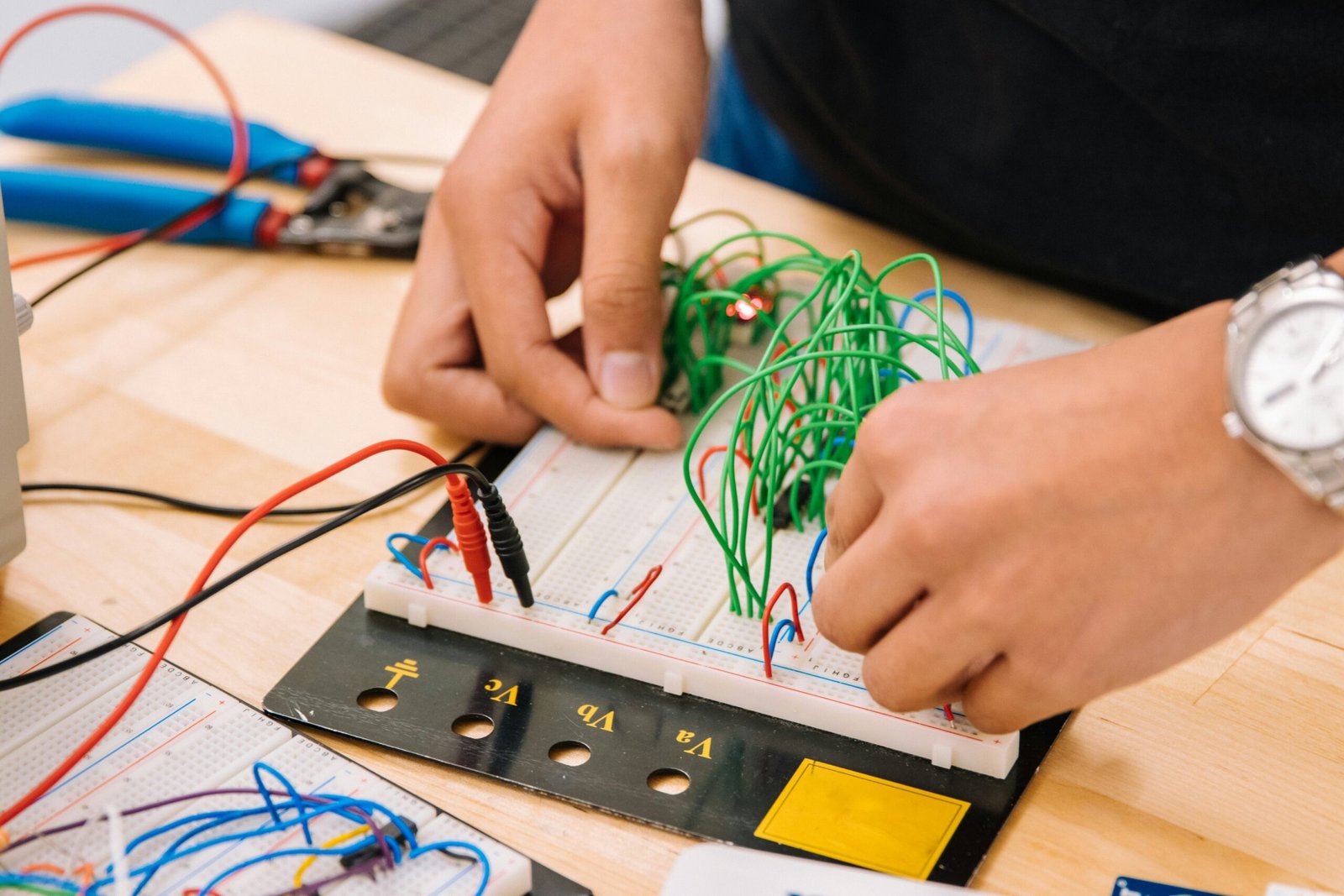
Technology has transformed modern education, reshaping how students learn and educators teach. Over the years, advancements in technology have evolved from traditional methods to interactive and digital approaches. Tools like computers, tablets, and smartboards have changed the classroom dynamic, fostering a more engaging learning environment.
The earliest educational technologies date back to the 15th century with the printing press, which made books and educational materials widely available. This invention laid the groundwork for future advancements, enabling learners to access information more readily. As society progressed, technology evolved, leading to audiovisual aids and computers by the late 20th century. Each of these tools enhanced instructional delivery.
Recently, the internet has radically changed education, providing vast resources and learning opportunities. Online platforms and educational software allow access to courses and materials at any time, making education flexible and accessible. This technology encourages personalized learning experiences, enabling students to progress at their own pace and revisit challenging concepts.
Social media and collaborative tools foster communication and teamwork among students and educators. The shift from teacher-centered instruction to student-centered learning promotes critical thinking and problem-solving skills. These competencies are essential for success in today’s workforce. As we embrace ongoing digital transformation, we must recognize technology’s profound impact on how knowledge is acquired and shared.
Benefits of Technology in Education
The integration of technology into education has transformed the learning landscape, offering numerous advantages that enhance the educational experience. One key benefit is improved accessibility. With digital resources, students can access materials anytime, anywhere, making learning flexible. This is especially significant for students in remote regions, who can now connect to information that was previously out of reach.
Personalized learning is another crucial advantage. Today’s educational tools allow educators to tailor experiences to meet each student’s needs. For instance, adaptive learning software assesses a student’s performance in real-time and adjusts content difficulty. This approach ensures that students remain challenged and engaged, fostering deeper understanding.
Engagement improves through technological tools like interactive simulations and gamified lessons. These technologies make learning enjoyable and promote active participation, which is vital for knowledge retention. By utilizing modern educational technologies, teachers can create dynamic classrooms where students are actively involved in their learning processes.
Additionally, technology aids educators by streamlining administrative tasks and enhancing communication with students and parents. Learning management systems (LMS) simplify coursework distribution, assignment collection, and student progress tracking. This digital framework enables quick feedback and promotes transparent communication, keeping parents informed about their child’s performance. Ultimately, integrating technology benefits both students and teachers in their vital roles.
Types of Technology Used in Education
The modern educational landscape is enriched by a diverse array of technological tools that enhance teaching and learning processes. Learning Management Systems (LMS) are pivotal contributors to this transformation. These platforms serve as centralized hubs for educators to create, manage, and deliver instructional content. They simplify course administration, streamline communication, and provide extensive student progress tracking.
Educational apps have gained immense popularity, catering to various subjects and learning styles. These applications range from language learning platforms to advanced math tools, offering personalized learning experiences tailored to individual needs. Their versatility allows for supplementing classroom instruction and enabling independent learning.
Virtual classrooms have emerged as significant technological advancements, especially during recent global events that required remote learning solutions. These environments allow real-time interaction among students and teachers, regardless of geographical limitations. Video conferencing tools foster engagement and collaboration, mimicking the dynamics of physical classrooms.
E-books have transformed how educational materials are consumed. This digital format provides easy access to a vast repository of resources, often at lower costs than traditional textbooks. The interactive features in many e-books, such as hyperlinks and multimedia content, enhance comprehension and retention.
Interactive whiteboards represent a notable advancement in classroom technology. These devices encourage active participation by allowing teachers to present information dynamically. They engage students through interactive lessons, fostering an inclusive environment that caters to diverse learning preferences.
Challenges of Integrating Technology in Education
As educational institutions adopt technology to enhance learning experiences, several challenges arise. One major issue is the digital divide. This gap exists between students with access to digital devices and reliable internet and those without. In many regions, especially underserved communities, students may struggle to participate in technology-driven educational environments. This inequity can hinder their progress and contribute to disparities in academic achievement.
Resistance from educators also poses a significant challenge. Some may feel apprehensive about using new technological tools in their teaching practices. Concerns often stem from a lack of training or skepticism about the effectiveness of digital tools in enhancing learning outcomes. This resistance can impede the effective implementation of technology-enhanced learning, resulting in missed opportunities to engage students.
Cybersecurity risks associated with technology use in education are another critical issue. As schools adopt online platforms, the risk of data breaches and privacy violations increases. Institutions must prioritize strong security measures to protect sensitive information. The evolving nature of cyber threats necessitates ongoing education and training for staff and students to foster a culture of digital safety.
Furthermore, while technology can enrich learning, it can also distract students. With numerous applications and social media platforms available, maintaining focus can be challenging. Balancing the benefits of educational technology with potential distractions is crucial for educators aiming to create effective learning environments.
The Role of Teachers in a Technology-Driven Classroom
As technology becomes integral to education, the role of teachers is undergoing a significant transformation. In traditional settings, teachers often served as the primary knowledge source, delivering information in a one-directional manner. However, in a technology-driven classroom, this role shifts to becoming facilitators of learning. Teachers guide and support students as they navigate a wealth of digital resources.
Educational technology, such as online platforms and collaboration tools, enables students to learn at their own pace. Consequently, teachers must adapt their strategies to create student-centered learning environments. This adaptation requires developing skills that emphasize critical thinking, problem-solving, and collaboration. Rather than merely providing information, teachers must curate quality resources and assist students in assessing their relevance and validity.
Teachers also foster digital literacy among their students. This includes instructing them on effectively researching online, evaluating sources for credibility, and utilizing technology ethically. By embedding technology into lesson plans, educators enhance engagement, motivating students to leverage interactive tools to deepen their understanding.
Additionally, teachers in technology-enhanced classrooms monitor and assess student progress. Utilizing tech tools, educators can analyze data to tailor their teaching methods to meet individual needs, promoting personalized learning experiences. This adaptive approach enables teachers to build stronger relationships with students and support their academic journeys.
Impact of Online Learning and Remote Education
Online learning platforms have dramatically transformed modern education. Technology has evolved traditional structures to incorporate remote education, making learning accessible to diverse populations. Online learning offers the flexibility to pursue educational opportunities regardless of geographical constraints. This caters to students who may not attend conventional institutions due to work or health commitments.
During the COVID-19 pandemic, the significance of remote education became even more pronounced. Institutions globally had to adapt quickly, leading to a rapid acceptance of digital tools as viable teaching methods. Online learning can deliver content in diverse formats, such as videos and interactive modules, engaging students innovatively. This versatility is particularly beneficial for reaching students with varied backgrounds and learning styles.
However, while online learning presents many advantages, it has limitations. The digital divide can hinder certain populations from fully participating in remote education. Additionally, the absence of physical interaction can impact motivation and lead to feelings of isolation. Effectiveness varies depending on individual learning preferences and self-discipline. While online learning significantly contributes to modern education’s evolution, addressing its limitations is imperative to maximize its potential for all learners.
Future Trends in Educational Technology
The landscape of educational technology is continuously evolving, driven by innovations redefining education delivery. Among the most prominent trends are artificial intelligence (AI), augmented reality (AR), and gamification. These technologies promise to reshape traditional learning environments and enhance the educational experience for students and educators alike.
Artificial intelligence will play a pivotal role in personalizing education. AI-powered tools will enable educators to tailor lessons to meet individual student needs, offering adaptive learning pathways based on performance. This personalization could significantly increase motivation and comprehension, as experiences are customized to suit each learner’s preferences. AI can also facilitate administrative tasks, allowing teachers to focus more on instruction.
Augmented reality is another innovation on the horizon that has the potential to revolutionize classroom experiences. By integrating digital information with the real world, AR creates immersive learning environments where complex concepts come to life. For instance, students could explore historical sites, visualize intricate biological processes, or conduct virtual science experiments. This interactive nature appeals to visual learners, making AR a valuable tool in diverse settings.
Gamification is gaining traction in education, transforming conventional methods into engaging, game-like experiences. By incorporating elements such as points and badges, educators can motivate students to participate actively in their learning journeys. This approach not only makes education enjoyable but also promotes teamwork and healthy competition.
In conclusion, integrating AI, AR, and gamification in education represents a significant shift in how learning occurs, making it more personalized and engaging. As these technologies continue to develop, educational institutions must adopt and implement them thoughtfully, ensuring a future where technology enriches learning and prepares students for an increasingly complex world.
Case Studies of Technology Integration in Schools
The integration of technology in educational settings has substantially transformed teaching methodologies. Numerous schools worldwide have adopted innovative tools to enrich learning experiences and enhance engagement. Here are a few notable case studies illustrating the successful incorporation of technology in schools.
One prominent example is the use of tablets in the Los Angeles Unified School District. This initiative involved distributing tablets equipped with educational apps to middle school students. The primary aim was to improve access to information and foster personalized learning. Teachers reported increased student motivation and participation, fostering a more interactive classroom environment. However, the initiative faced challenges, such as device management and ensuring equal access, requiring the district to implement robust training programs.
Another compelling case is a school in Finland, which embraced the Flipped Classroom model through video conferencing tools. Teachers recorded lessons and uploaded them online, allowing students to review content before class. This model freed up classroom time for collaborative projects and discussions. As a result, students reported higher engagement levels and deeper understanding of complex subjects, indicating that this approach effectively promotes active learning.
Lastly, the use of virtual reality (VR) in classrooms is gaining traction. A school district in Texas implemented VR to enhance history lessons, allowing students to “visit” historical sites. This immersive experience sparked curiosity and made learning more memorable. Students expressed excitement about participating in lessons that felt more like adventures, underscoring the potential of VR to enhance educational engagement.
These case studies demonstrate that while technology integration in education can yield impressive results, it also presents challenges that require thoughtful implementation and ongoing support. The successful use of technology hinges on addressing these issues and ensuring equitable access to resources.
Conclusion
In conclusion, technology has profoundly impacted education, reshaping how students learn and educators teach. The advantages of integrating technology into classrooms are numerous, ranging from improved accessibility and personalized learning to enhanced engagement. While challenges such as the digital divide and resistance from educators exist, the future of education lies in effectively leveraging technology to create meaningful learning experiences.
As we look ahead, trends such as artificial intelligence, augmented reality, and gamification will continue to reshape educational landscapes. These innovations promise to enhance teaching methodologies and engage students in new and exciting ways. By embracing these changes, educators can prepare students for the complexities of the modern world, ensuring they are equipped with the skills and knowledge necessary for success.


